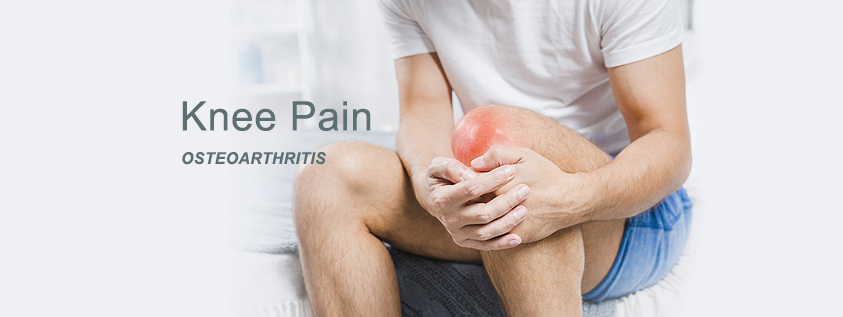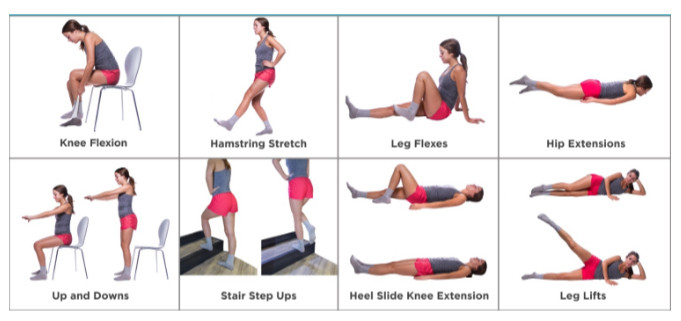STAY UPDATED

EXERCISES TO DO:
- Quads Isometerics
- Hams Isometrics
- Gluteal Isometrics
- Ankle Pumps
- Short Arc
- Adductor isometrics
- SLR

ADLs.
Do’s:
- Exercise
Do low-impact aerobics like swimming, cycling or elliptical training regularly, Keeping muscles around the joints strong and flexible prevents pain. Use stationary exercise machines, which reduce wear and tear on your joints. Walking outdoors is great too, he says, “as long as you wear well- cushioned shoes and walk on soft surfaces like grass or dirt.” Start slowly, working up to at least 30 minutes of gentle exercise most days of the week. If you work in front of a computer from 9 to 5, get up, move around and stretch throughout the day. Sitting still only exacerbates stiffness and pain. - Stretch
Stretching trains tendons and ligaments to support your joints. Stretch muscles associated with the “joints you use the most — and not before you warm up,” Stretching cold muscles makes injury much more likely. “After exercise, when your muscles and tendons are warm, is the best time to stretch.” - Strengthen
Knee osteoarthritis is common, but strengthening quadriceps muscles at the front of the thigh helps stabilize your knee and prevent osteoarthritis — or at least keeps it from getting worse.“Sit in a chair and [straighten] one leg, hold it for 10 seconds and repeat 15 times. Do that daily three times in each leg, and I guarantee that you’ll see your quadriceps grow,”
- Alternate ice and heat
“Ice can be your friend,” especially after a workout because it reduces swelling and inflammation. Put a bag of frozen peas on the painful spot for 15-20 minutes twice a day, he advises. Or try alternating cold and hot packs. That way you can have continuous
pain relief — and the heat relaxes tight muscles.
“Put one on for 5 minutes, then the other, for up to 15 minutes,”. If you use an ice pack, place a cloth between the pack and your skin to avoid irritation. - Get outdoors.
Sunshine stimulates vitamin D production in the body, essential for proper bone formation. So consider this a two-fer tip: Get your exercise and vitamin D at the same time on your daily walks.
The Don’ts:
- Don’t gain weight
Obesity and joint pain are constant companions. The best way to lose weight? Eliminate high-fat, high-sugar foods and eat fruits, vegetables, whole grains, and lean meats and fish instead. Get out and exercise too, even if you only walk around the block. Every little step helps you lose weight and ward off joint pain. - Don’t smoke
“Smoking damages joints” Tobacco’s toxins also stress connective tissue, which leads to more problems. The researchers believe that smoking slows cartilage cell production and
raises the levels of blood toxins, which leads to cartilage loss. Smoking also increases carbon monoxide levels in the blood, which could indirectly affect cartilage repair. - Don’t overuse painkillers
Anti-inflammatories, such as ibuprofen (Advil) or naproxen (Aleve), should be used in moderation for pain; overuse leads to other medical trouble.Among the risks: high blood pressure, stomach upset and injury and heart and breathing problems. - Don’t run — walk
“People who engage in high-impact exercise over time will get osteoarthritis because of the repetitive shock to the joints.So keep it gentle and regular.




